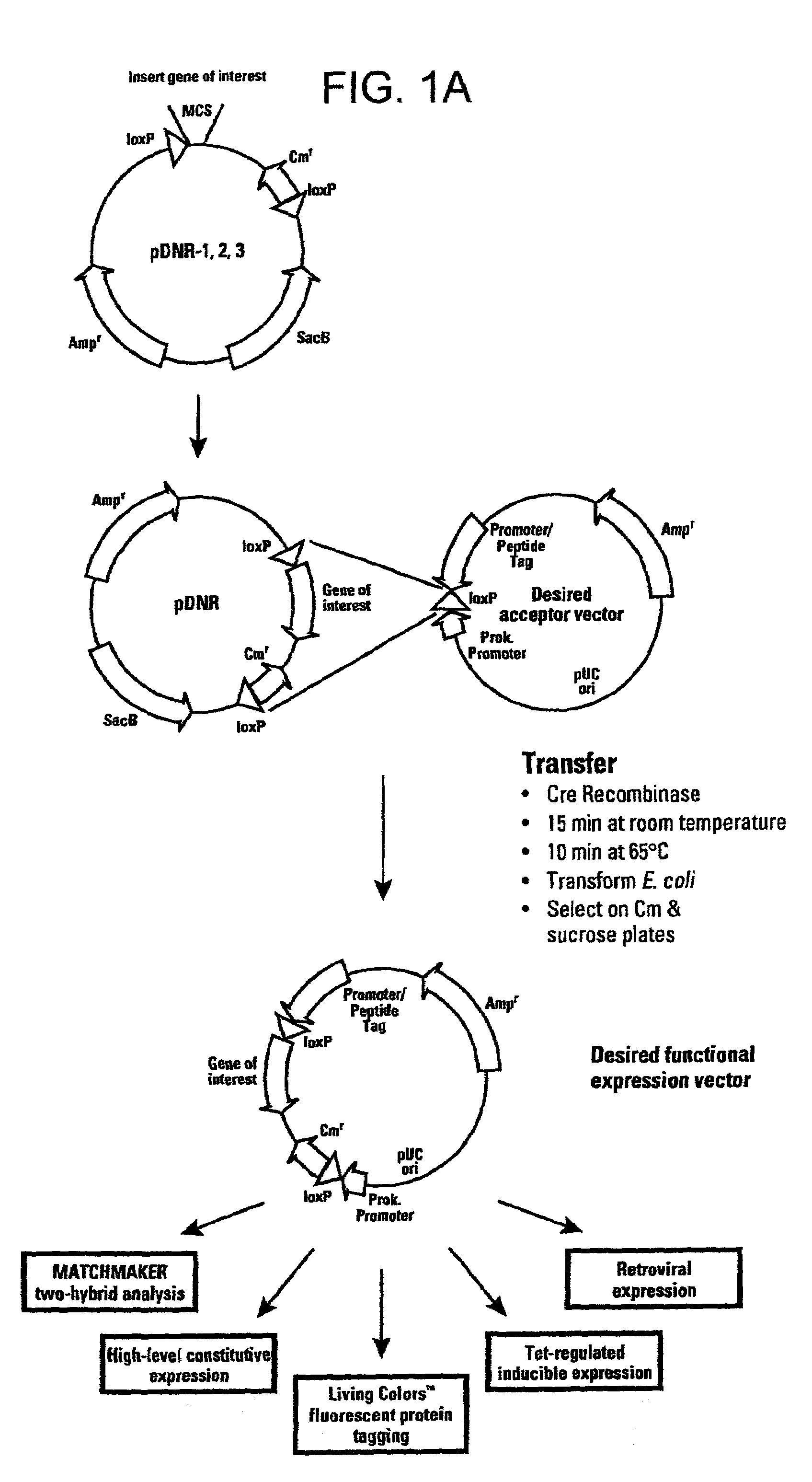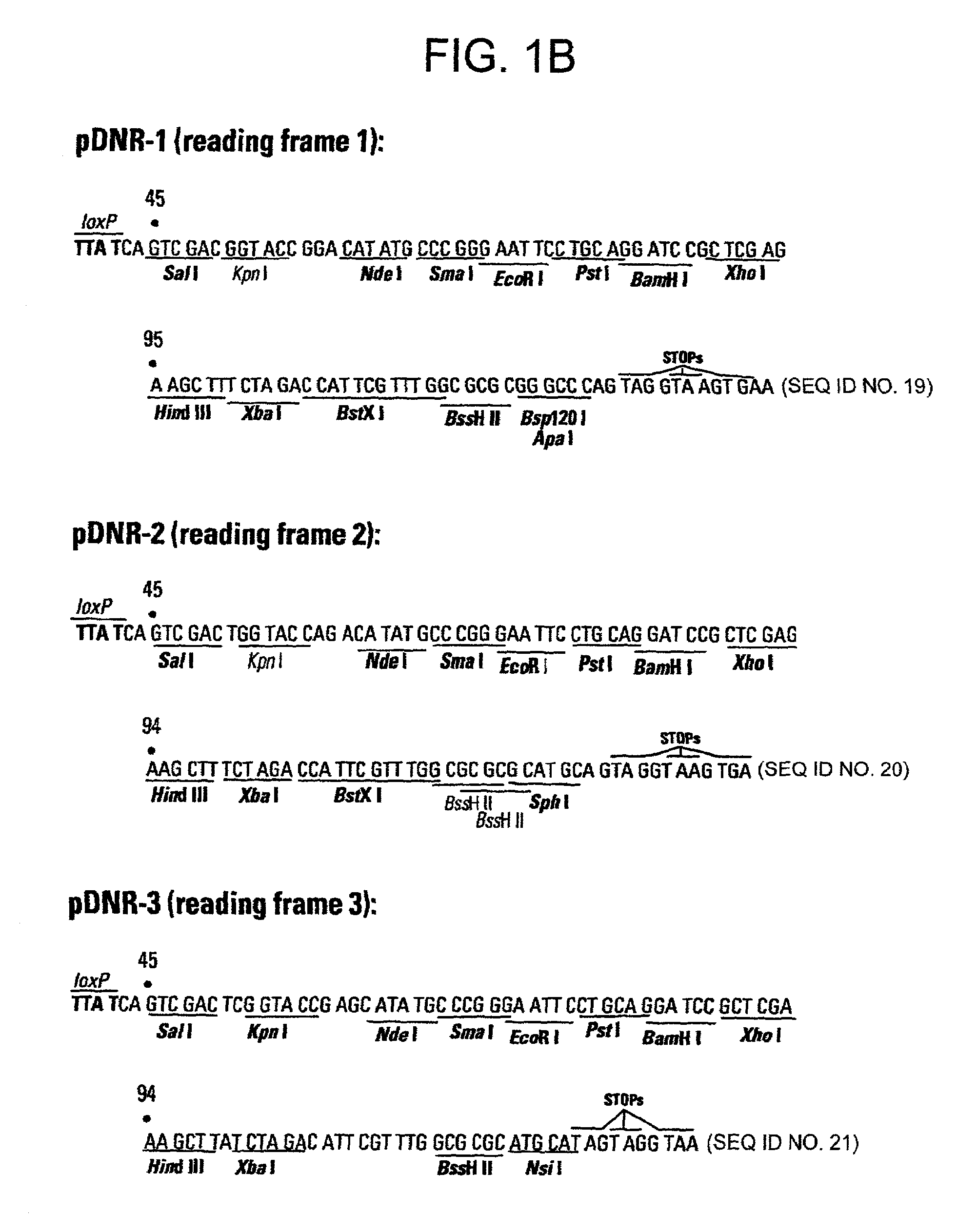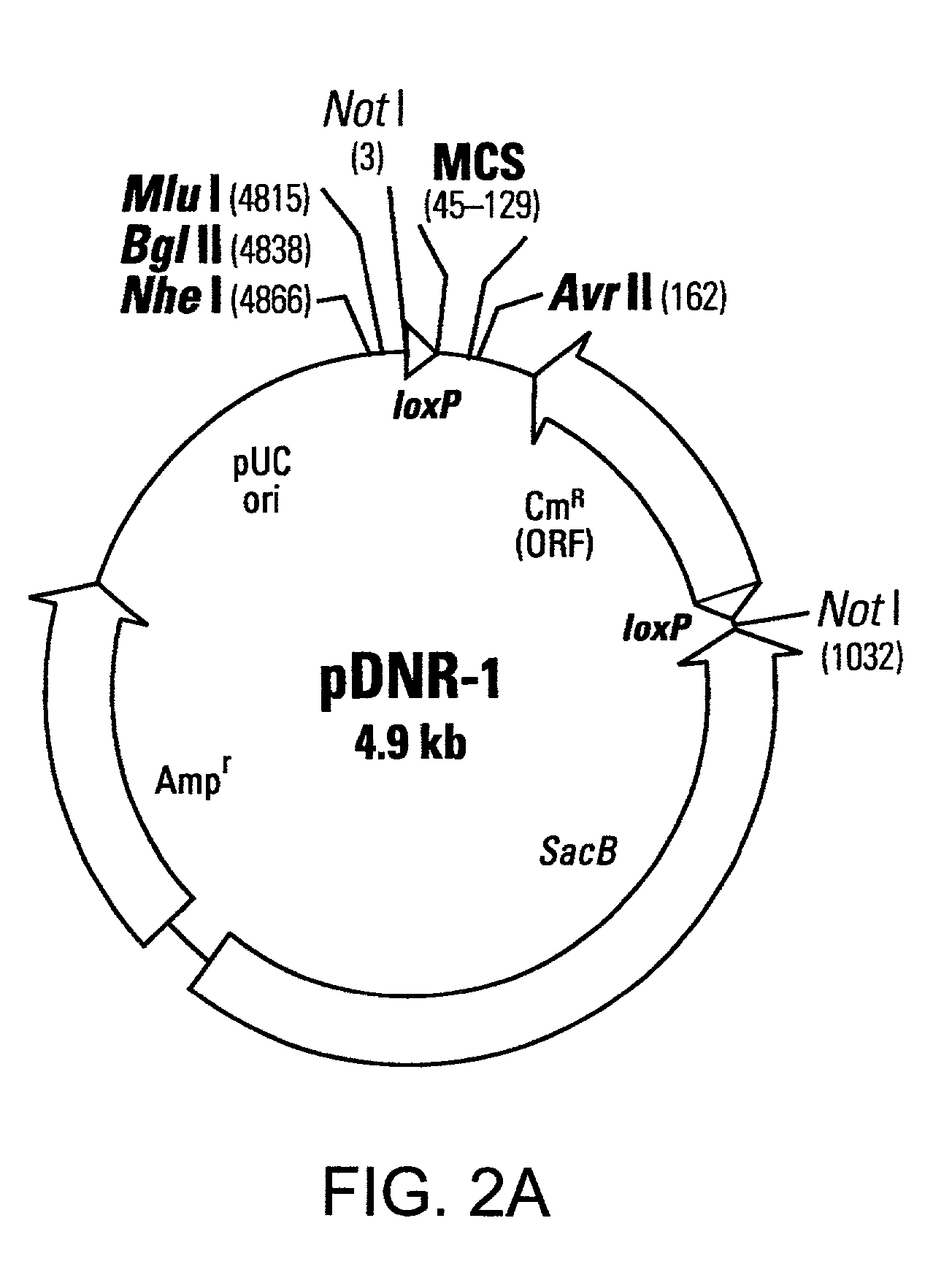Recombinase-based methods for producing expression vectors and compositions for use in practicing the same
a technology of expression vectors and recombinase, applied in the field of molecular biology, can solve the problems of time-consuming purification of subcloning and limited ability to transfer dna of interest to an appropriate expression vector,
- Summary
- Abstract
- Description
- Claims
- Application Information
AI Technical Summary
Benefits of technology
Problems solved by technology
Method used
Image
Examples
example 1
Construction of a pDonor Construct
[0114]This example describes a donor construct, the pD3 vector, which contained two loxP sites, a polylinker, a chloramphenicol resistance gene (CmR) open reading frame lacking a promoter, a standard origin of replication (derived from pUC 19) and an ampicillin resistance gene (AmpR) with its associated promoter. If a gene of interest is contained within pD3, any number of plasmid expression constructs containing this gene of interest can be constructed rapidly (e.g., within a single day). The expression constructs (the acceptor construct or the pAcceptor used in this example was pCMVmycloxP (described below)) contained a sequence-specific recombinase target site, a promoter capable of expressing a gene of interest, an antibiotic resistance gene other than chloramphenicol (e.g., ampicillin), and a promoter positioned such that upon recombination of the pAcceptor with pD3, the promoter drove expression of the CmR open reading frame from pD3.
[0115]Usi...
example 2
Construction of pCMV-myc-LoxP
[0127]Acceptor constructs for the donor recombination system are generally expression vectors which have been modified by the insertion of a loxP or other sequence-specific recombinase target site and a prokaryotic promoter in a position 3′ of the sequence-specific recombinase target site and oriented such as to direct transcription through the sequence-specific recombinase target site. It is also possible to utilize readthrough transcription from other promoters in the expression vector, provided that their orientation and distance from the loxP site is such that they can drive expression of the donor partial-selectable marker gene upon recombinationn of the acceptor vector with the desired fragment of the donor vector. The presence of a loxP site on the acceptor construct permitted the rapid subcloning or insertion of the gene interest contained within the pDonor vector to generate a final recombination construct capable of expressing the gene of inter...
example 3
[0139]Generation of 10 Additional Acceptor Vectors
[0140]10 additional acceptor vectors, as described in FIGS. 3A–3J have been made as follows. The construction of these vectors was as follows:
[0141]Each parental vector used to generate the various acceptors was cut with two restriction enzymes that cut within the MCS of the vector, as detailed below. Into these was inserted a PCR fragment of approx. 170 bp generated using various primers (described below) and pCMVMycLoxP, the acceptor molecule described above (see example 2 above) as a template. The primers are named either LoxP or AmpPro (to designate to which part of the template they are complementary) plus the name of the restriction enzyme present in the 5′ end of the primer. These restriction sites match the ones cut in the MCS of the vector to be modified. The fragment generated in this PCR reaction encodes the LoxP site and the ampicillin promoter from the pCMVMycLoxP acceptor.
[0142]List of the 10 vectors used and restrictio...
PUM
| Property | Measurement | Unit |
|---|---|---|
| volume | aaaaa | aaaaa |
| volume | aaaaa | aaaaa |
| temperature | aaaaa | aaaaa |
Abstract
Description
Claims
Application Information
 Login to View More
Login to View More - R&D
- Intellectual Property
- Life Sciences
- Materials
- Tech Scout
- Unparalleled Data Quality
- Higher Quality Content
- 60% Fewer Hallucinations
Browse by: Latest US Patents, China's latest patents, Technical Efficacy Thesaurus, Application Domain, Technology Topic, Popular Technical Reports.
© 2025 PatSnap. All rights reserved.Legal|Privacy policy|Modern Slavery Act Transparency Statement|Sitemap|About US| Contact US: help@patsnap.com



